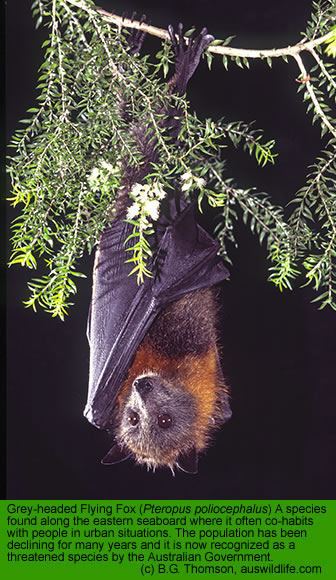
Summary of final report on the Australian Flora Foundation funded project:
Anthony C. Oldfield
Centre for Resource and Environmental Studies, Australian National University, Canberra, ACT Australia
18 October 2006
This project was an investigation into the olfactory preferences of three Australian Megachiropteran (bat) species, Pteropus poliocephalus, P. scapulatus and P. alecto, for a variety of plant-derived odours. It outlines a preliminary field study on the variation in Eucalyptus gummifera headspace volatiles in relation to P. poliocephalus and other pollinator activity.
These bats did not select odours on the basis of absolute concentration or intensity, but on qualitative characteristics. In addition, evidence from the field suggests that rhythmical variations in floral volatiles emissions from a bat-preferred flower, E. gummifera, are correlated with bee activity, with bats working trees with significantly lower volatiles concentrations.
Until now it has not been possible to state with absolute confidence that non-echolocating Megachiropterans are capable of detecting and discriminating between food-related odours. This study shows that Pteropus can use their sense of smell to locate food. Further studies on these topics are warranted
